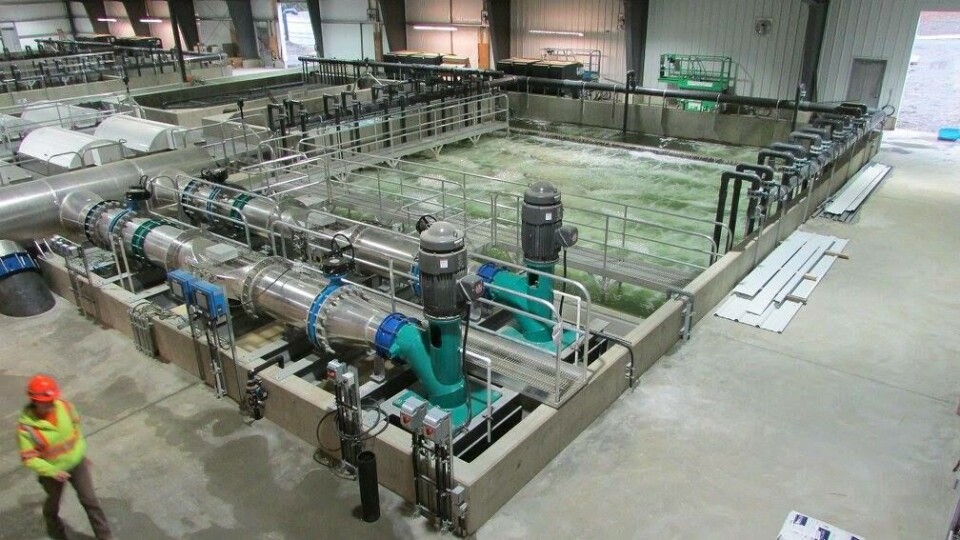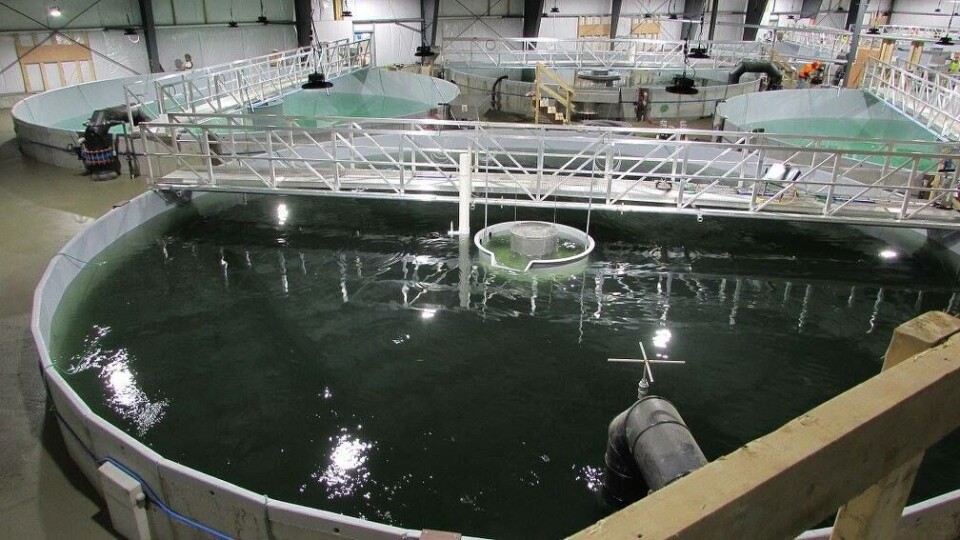
First fish enter MH hatchery
Marine Harvest's new state-of-the-art RAS hatchery on Vancouver Island - one of the largest and most technologically advanced hatcheries on the planet - has been stocked with its first fish this week.
More than a million Atlantic salmon parr were stocked into Marine Harvest Canada's (MHC) newest and largest recirculating aquaculture system this week.
MHC Freshwater Director Dean Guest says salmon at the company's Dalrymple facility were introduced gradually, first 500, then 250,000, stepping up numbers as the flow of water and environment in the tanks was deemed suitable.
"When we started designing this system two years ago we had a lot of input from across the company so it is an exciting milestone for a lot of our staff," Dean says.
"There are some elements left to finish, but generally the system is ready for its designed biomass. Everything seems to be working properly and the fish are in and feeding."
It is the first of five identical 14m systems to be built between Dalrymple and Big Tree Creek hatcheries. They are based on a 6m system that MHC designed and built in 2014.

One of the design priorities was to minimize noise and clutter, thereby creating a safe and comfortable workplace. They've already measured the level of operating noise with good results.
These improvements are a part of the company's $40 million investment into land-based recirculating aquaculture systems aimed at improving environmental performance and increasing production of smolts ready for seawater entry.
“Salmon farmers have capitalized on decades of growing experience which has enabled smolt size to increase prior to saltwater entry. This increase in size – from 30 grams 20 years ago, to a 130 gram average today – reduces the time adult salmon are exposed in the ocean to variable challenges such as low dissolved oxygen and harmful plankton,” Guest explained.
Recirculation uses about one-hundredth of the freshwater as a traditional flow-through aquaculture system. 100% of the water passes through 100% of the system, meaning that all of the water passes through ozone and UV treatment each cycle.
Guest explained that, although land-based farming systems for salmon continue to evolve toward market size production, there are still a number of challenges that must be overcome - including energy, freshwater use, and fish welfare.
“The current mix of modern aquaculture technologies – land- and ocean-based – complement each other very well and are a sustainable and responsible way to grow salmon,” he said.
Guest told Fish Farming Expert that the hatchery is unique because of the modular design of the recirculating aquaculture systems - the system is replicated and within each system the components are exactly the same.
Guest added that, in the current plan, MHC expects to produce 650 tonnes of smolts per year at each hatchery.























































